Inspired Nutraceuticals has been busy. One of the reasons they were named a brand to watch in 2024 in PricePlow's 2023 Supplement Industry Awards was due to their launch of Endless, which took the name from an older intra-workout supplement they had launched in 2017, completely remaking it into a novel electrolyte hydration drink. We covered the new drink in our article, Inspired Nutraceuticals Endless RTD: For Endless Youth and Hydration.
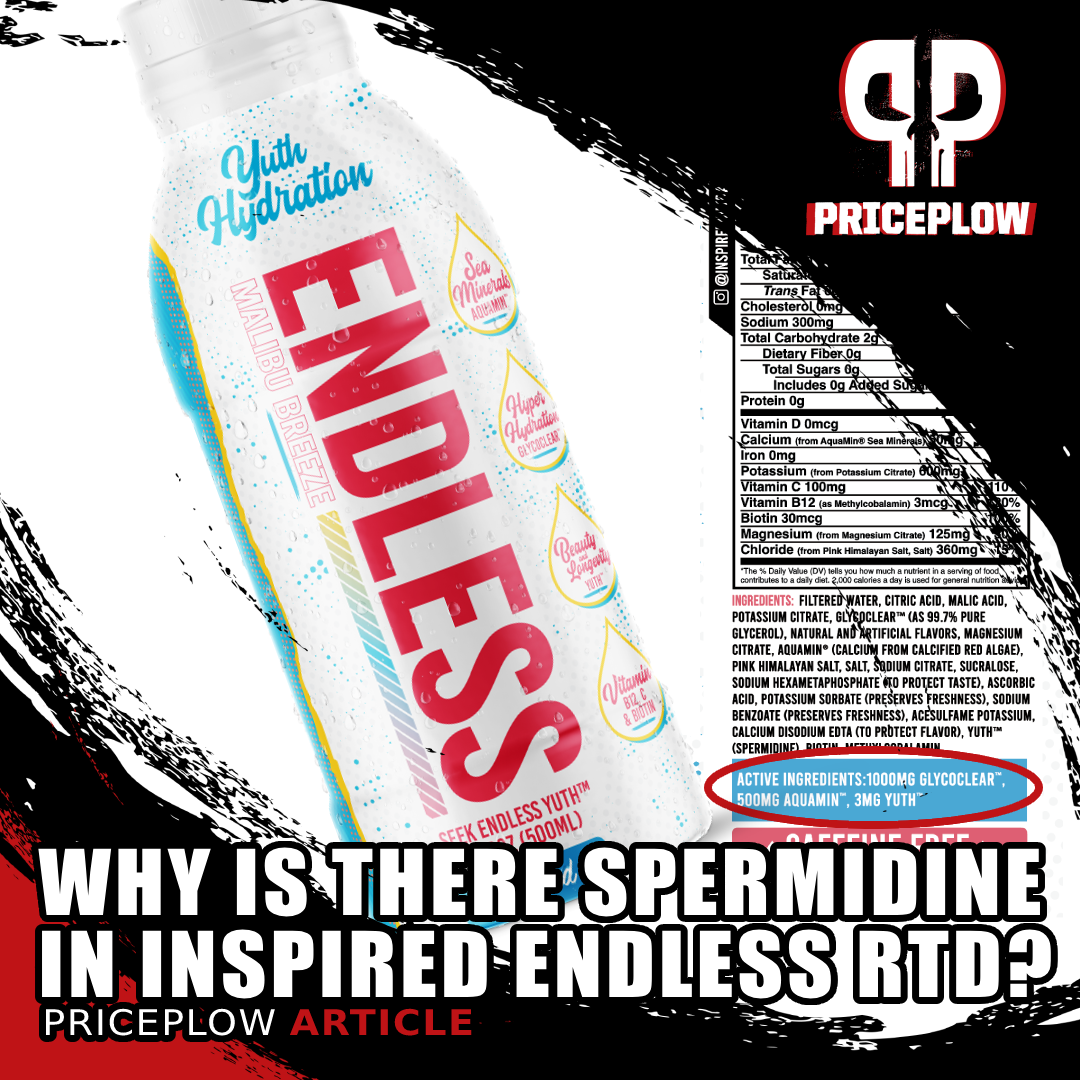
Why did Inspired Nutra add spermidine to Endless Hydration RTD? We look at the unique anti-aging and skin care spin to complement the hydration aspect
This delicious new formula is focused on one particular aspect of sports performance – hydration. Hydration is of vast importance, not only for athletic performance, but for basically every domain of human health.
While this topic is actually not as thoroughly researched as you might expect (it's tough to patent water, salt, and potassium!), existing evidence indicates that optimizing hydration status is crucial for cognition, kidney function, and weight management,[1] as well as blood pressure and vascular function.[2]
The standard advice is to simply drink lots of water, which can work... up to a point. For one thing, the amount of water in your body doesn't necessarily translate to cellular hydration, which is really what we're after. Additionally, drinking lots of water doesn't mean your body will retain it.
That's why Inspired added some glycerol to Endless RTD -- this does promote water retention and cellular hydration. And electrolyte balance is also important for cellular hydration.[3] Glycerol and electrolytes obviously make sense.
But why does Endless RTD contain Yüth spermidine inside?
That's what we're covering today. First, check out our Endless RTD price comparisons and sign up for our Inspired Nutraceuticals news notifications, then let's get into it:
Inspired Nutraceuticals Endless RTD – Deals and Price Drop Alerts
Get Price Alerts
No spam, no scams.
Disclosure: PricePlow relies on pricing from stores with which we have a business relationship. We work hard to keep pricing current, but you may find a better offer.
Posts are sponsored in part by the retailers and/or brands listed on this page.
Hydration and Skin Health – The Link to Spermidine
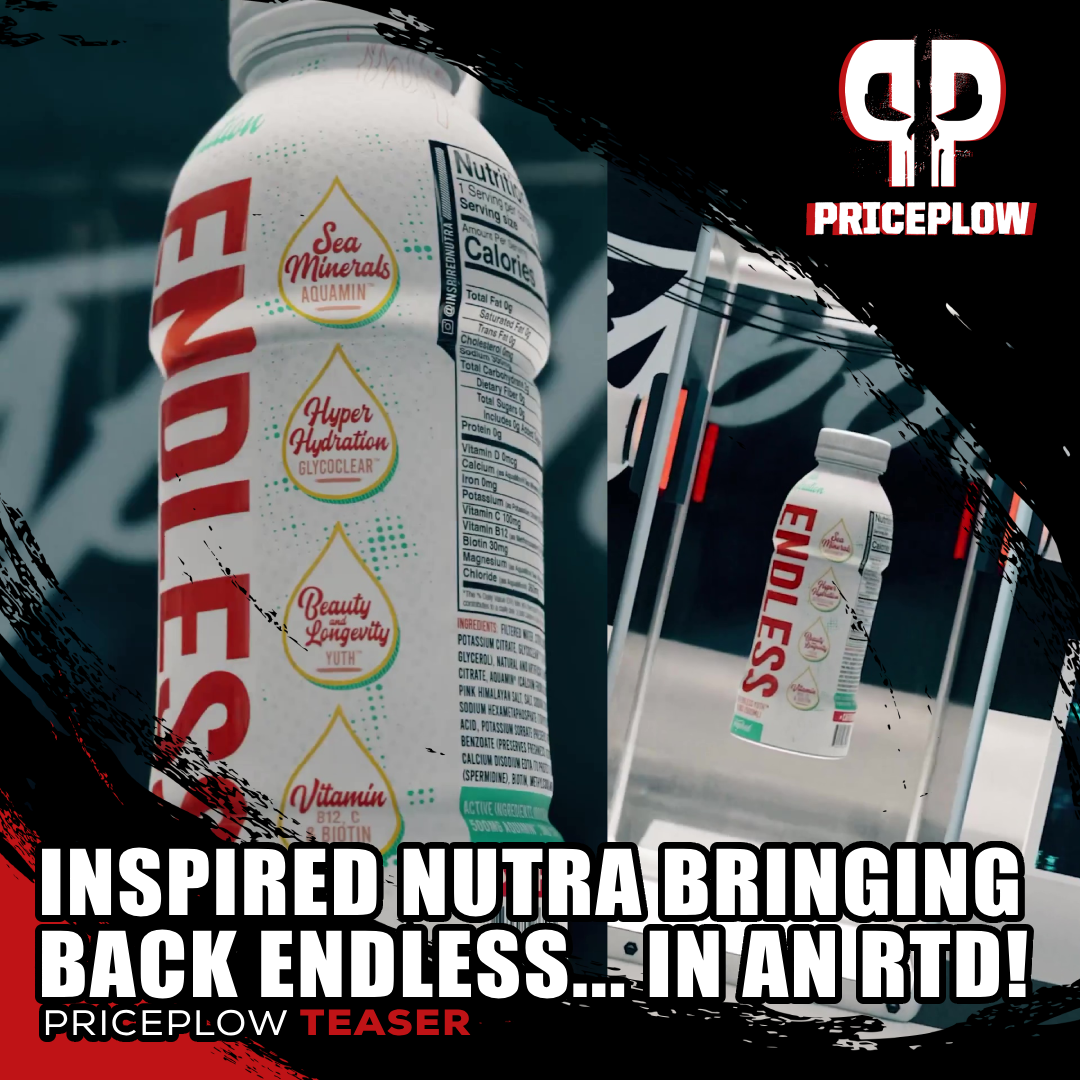
The Inspired Nutraceuticals Endless RTD has an incredible sodium:potassium ratio, a bit of glycerol, and a novel anti-aging add-on in Yuth spermidine!
Inspired's use of spermidine in Endless RTD represents an attempt to expand on the basic hydration drink concept. While spermidine doesn't directly affect hydration like glycerol or electrolytes can, it does encourage some of the outcomes associated with proper hydration.
The big one is skin health. Dehydration dries out skin cells, giving skin a rough, scaly, or even flaky texture and appearance. These effects can be counteracted by increased water intake. For example, one study found that drinking more water improved epidermal hydration and elasticity in the same manner as a topical moisturizer.[4]
But besides the aesthetic concerns, chronic dehydration can also actually cause premature skin aging.[5] So what can we do to help reverse the damage caused by chronic dehydration?
That's where Inspired Nutra brings in spermidine - taking Endless to the next level.
What is spermidine, and how can it help skin alongside hydration?
Spermidine is a polyamine,[6] meaning it consists of two or more different amino acids. Animal studies have found that spermidine can activate a process called autophagy, derived from a Greek word that literally means "self-eating", but scientists usually prefer "self-renew".[7]
During autophagy, your body's cells dismantle damaged or dysfunctional cellular components and recycle them into new, healthy, functional ones. If a cell is damaged beyond repair, autophagy can even trigger apoptosis, a process in which that cell undergoes programmed self-destruction.[8] The damaged cell can then be replaced by a healthy one.
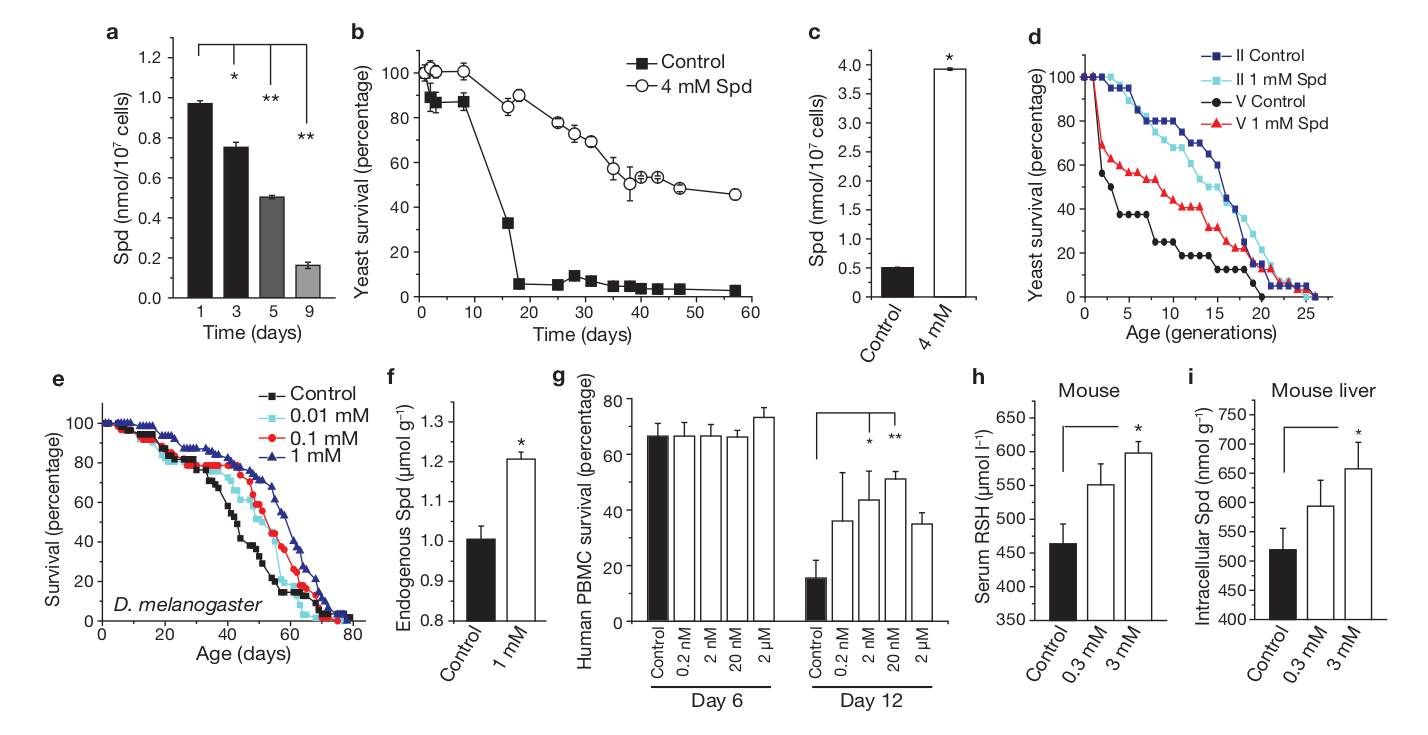
Spermidine extends lifespans of yeast, flies, and
human immune cells while inhibiting oxidative stress in aging mice.[9]
Autophagy's role in cellular rejuvenation is crucial for long-term cellular health and homeostasis. For one thing, autophagy is your body's first line of defense against out-of-control cellular proliferation, which can lead to enormous health issues if allowed to proceed unchecked. And in general, since bodily youth is partly a function of cellular youth, autophagy is important for delaying the effects of aging as well.[8]
Polyamines play an important role in autophagy regulation, and are synthesized endogenously by the body. Unfortunately, as we get older, our body's ability to do this declines, as does its rate of autophagy.[10] As a result, senescent cellular material builds up more and more as we age, a mechanism responsible for many of aging's unwanted effects.[8,11]
If we want to help maintain autophagy as we get older, then supplemental polyamines like spermidine are a great potential strategy. Although longitudinal human studies are currently lacking, in vitro and in vivo animal studies have shown that spermidine can increase lifespan and healthspan of lower organisms like yeast, flies, worms, and even human immune cells.[9]
Autophagy and skin health/appearance
Unsurprisingly, there's a close connection between autophagy and skin health.[13]
For example, one study found a close connection between decreased autophagy and hyperpigmentation, which can cause senile lentigo (liver spots) during photoaging (the aging of skin in response to sun exposure).[14] Cells in these skin spots were characterized by severe dehydration and skin barrier dysfunction.[14]
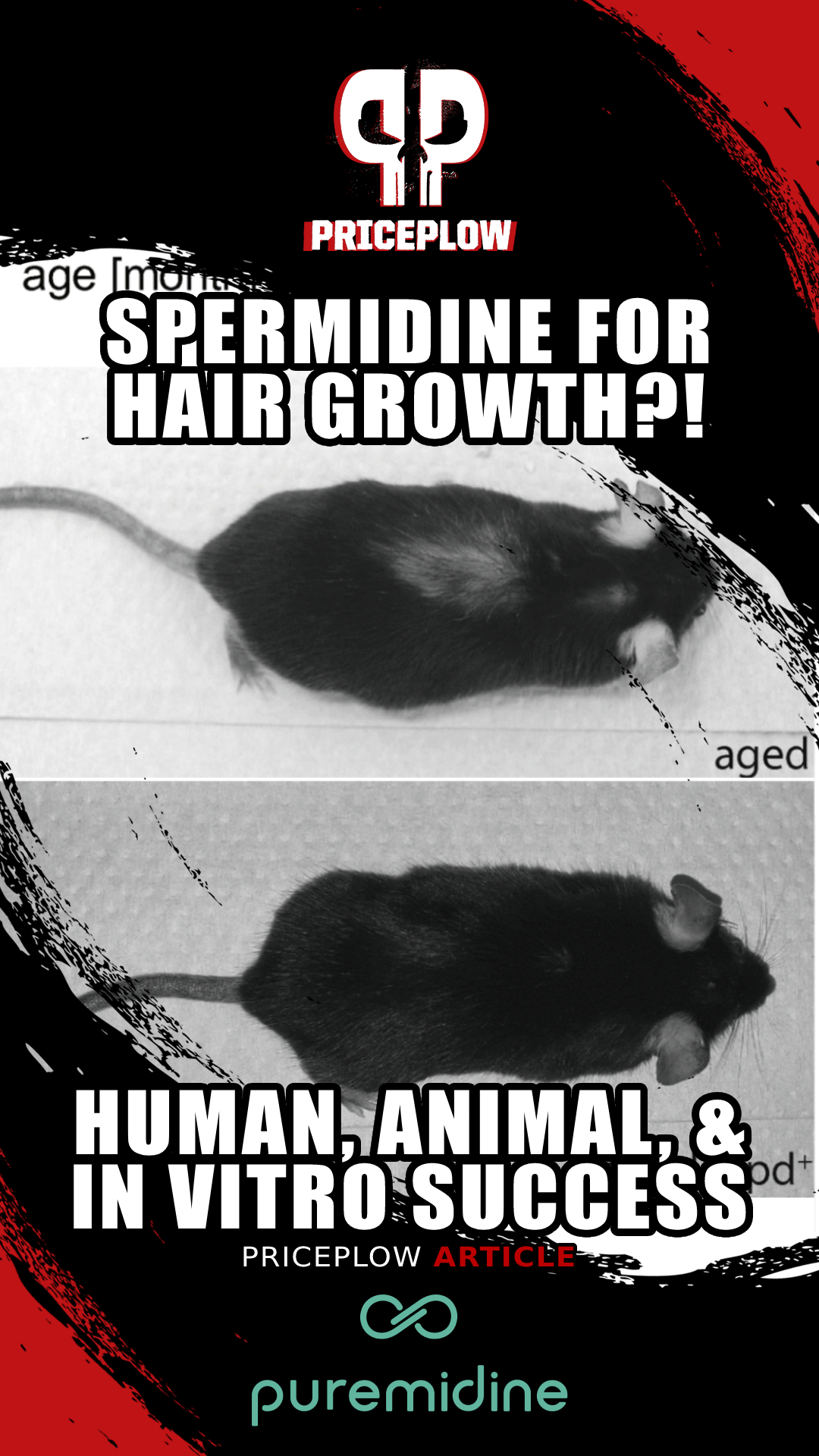
Can spermidine supplementation support more hair growth and reduced hair loss? Research from the trifecta of human, in vitro, and animal research all indicate yes! (see article linked below)
Using in vitro experiments, the same study found that restoring autophagy significantly improved cellular hydration status and skin barrier integrity.[14]
By skin barrier, we are referring to the fact that one of skin's most crucial functions is to keep pathogens, toxins, and other pathogenic substances out of the body. Seen this way, skin is really your body's first line of immune defense. And unfortunately, when autophagy slows down, the skin barrier weakens.[15]
In other words, upregulating autophagy through spermidine supplementation can potentially improve not just skin appearance, but also skin's immunological function.
But when it comes to improving appearance, autophagy doesn't just help reduce liver spots. In fact, as one study title reads, "autophagy plays an essential role in ultraviolet radiation-driven skin photoaging,"[16] and loss of autophagy increases the damage caused to skin by sun exposure, and hence, the rate of skin aging.[16]
One especially interesting piece of evidence that autophagy manages skin photodamage is the fact that exposure to UV light triggers the upregulation of autophagy.[17,18] This direct connection between the two mechanisms suggests that autophagy's role in skin health is evolutionarily conserved.
Autophagy and hair health
It's industry convention to mention skin, hair and nails in the same breath, since these tissues depend on many of the same nutrients for optimal health and function.
While peer-reviewed evidence linking fluid intake to hair health is lacking, it seems reasonable to assume that if you're interested in making your skin look luscious, you probably want the same for your hair. And fortunately, spermidine can help with that too![19-21]
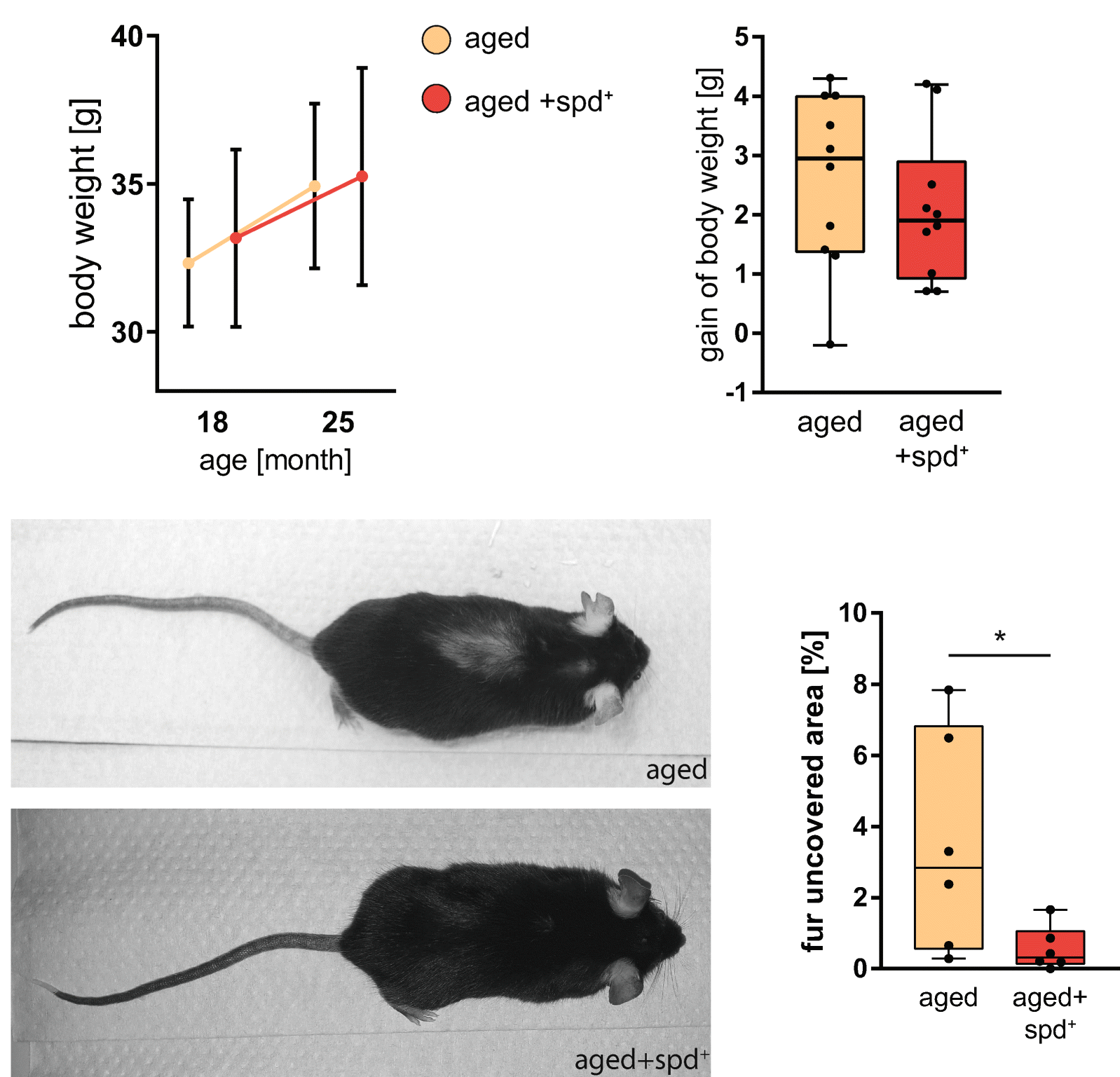
The reduction of hair loss in aged mice taking spermidine was so impressive that the researchers focused on this before discussing the other metabolic and organ health improvements![21]
We actually wrote an article about the connection between spermidine and hair growth – there's a lot of really compelling research on this specific topic. If you want to read it, read Spermidine for Hair Growth: Fighting Hair Loss with Polyamines. We also have a full article on spermidine itself for even more info.
Other Skin-Supporting Ingredients in Endless RTD
Now that we've established how Yüth spermidine from Compound Solutions can help improve skin health and appearance, it's worth mentioning that a couple other ingredients in Endless RTD can actually do the same.
-
Vitamin C (ascorbic acid) – 100 mg (110% DV)
Although vitamin C is most famous as a systemic antioxidant and pro-immune supplement, it has some important effects on skin health as well.
Looking for even more hydration before your workout? Inspired just dropped their new hydration drink!
For one thing, skin health depends on collagen production, and vitamin C can potentially help with that. A 2018 meta-analysis of 10 peer-reviewed studies showed that vitamin C supplements can increase the body's synthesis of collagen type I,[22,23] which is the predominant and most-studied collagen in mammals and other vertebrates.
Skin cells in particular are absolutely dependent on ample vitamin C supply for collagen production.[24]
Vitamin C's status as an antioxidant is important for its role in skin health, too. Healthy skin cells contain large amounts of vitamin C, which protects those cells from the oxidative stress typical of UV-induced photodamage.[24] Intuitively we might expect topical vitamin C application to be the best strategy for this, but actually, recent studies have shown that increasing systemic vitamin C levels through oral supplementation is more effective.[24]
-
Biotin (as d-Biotin) – 30 mcg (100% DV)
Biotin (vitamin B7) is one of the standard hair, skin, and nail ingredients, and it's no wonder since biotin deficiency can cause big problems for all three tissues – problems that include dermatitis[25] and hair loss.[26,27]
In one study, women with brittle nails took high-dose biotin, and about 50% of them experienced a significant reduction in the number of split ends.[28]
While the dose used in that study was way bigger than the dose in Endless RTD – about 2.5 grams vs. 30 micrograms – in this case, the smaller dose is more physiologically appropriate. The goal here is to prevent deficiency, and it isn't clear that biotin must be megadosed in order to have a clinical effect.
For a full write-up, see our main Inspired Nutraceuticals Endless Hydration RTD article. We haven't even gotten into the 3:2 potassium:sodium ratio in this article -- so you can read more about that here.
All Flavors Available
Conclusion: More than just Endless Hydration

Since 2014, Inspired has been coming out with some of the most innovative products on the market to 'fuel what inspires you'.
Inspired Nutraceuticals' Endless RTD is more than just a hydration formula – through the use of ingredients like spermidine, vitamin C, and biotin, this formula is designed to help optimize hydration-related health markers via multiple mechanisms beyond hydration itself.
This is quite a novel product -- and the taste is on point too (especially that Forbidden Fruit flavor). It's even more respectable once you remember that it has a 3:2 potassium:sodium ratio, which does make things tougher to flavor. Inspired made it happen, and that's why this is at the top of our Hydration stable right now.
Inspired Nutraceuticals Endless RTD – Deals and Price Drop Alerts
Get Price Alerts
No spam, no scams.
Disclosure: PricePlow relies on pricing from stores with which we have a business relationship. We work hard to keep pricing current, but you may find a better offer.
Posts are sponsored in part by the retailers and/or brands listed on this page.
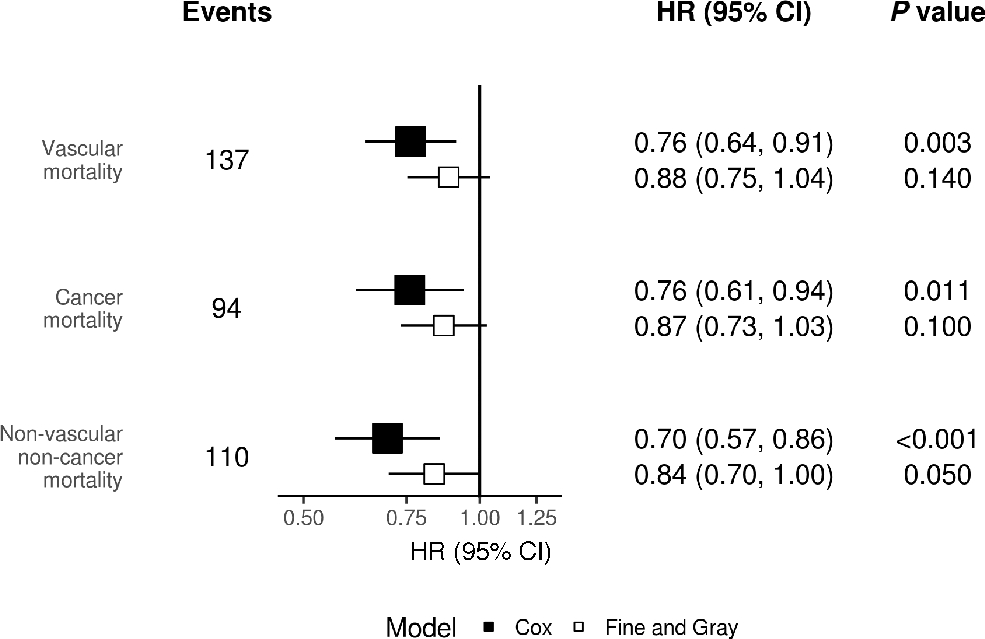
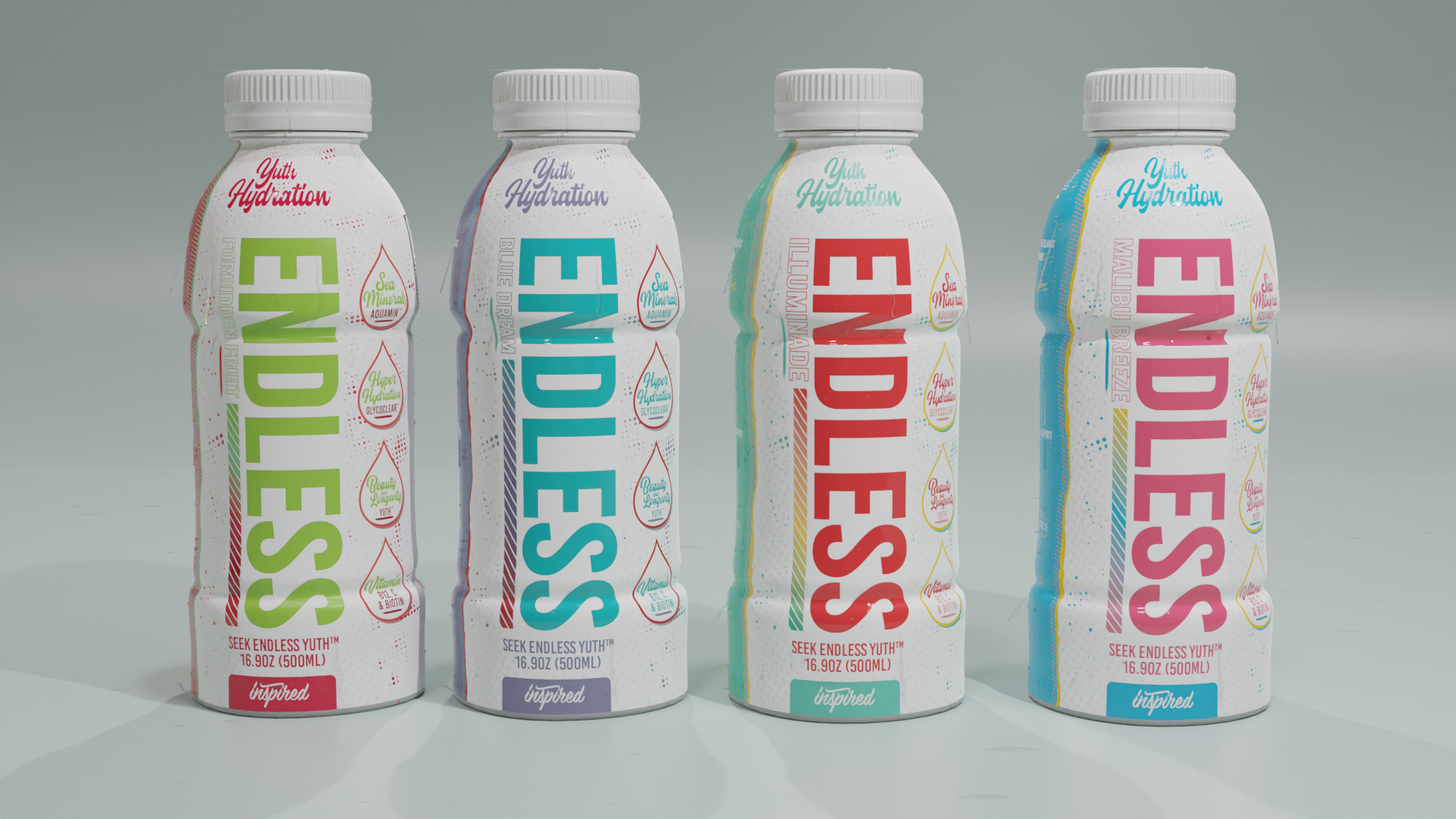
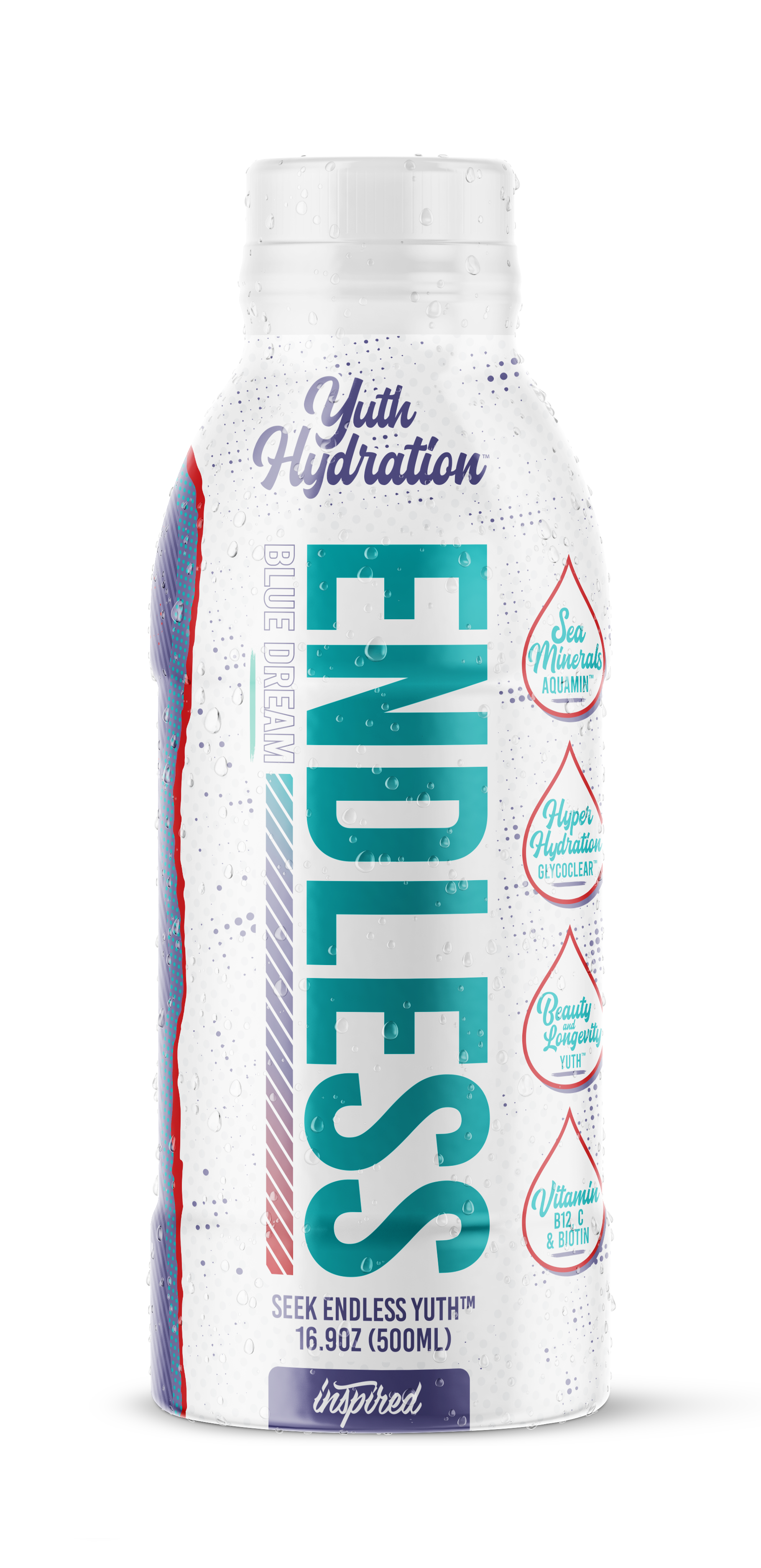


Comments and Discussion (Powered by the PricePlow Forum)